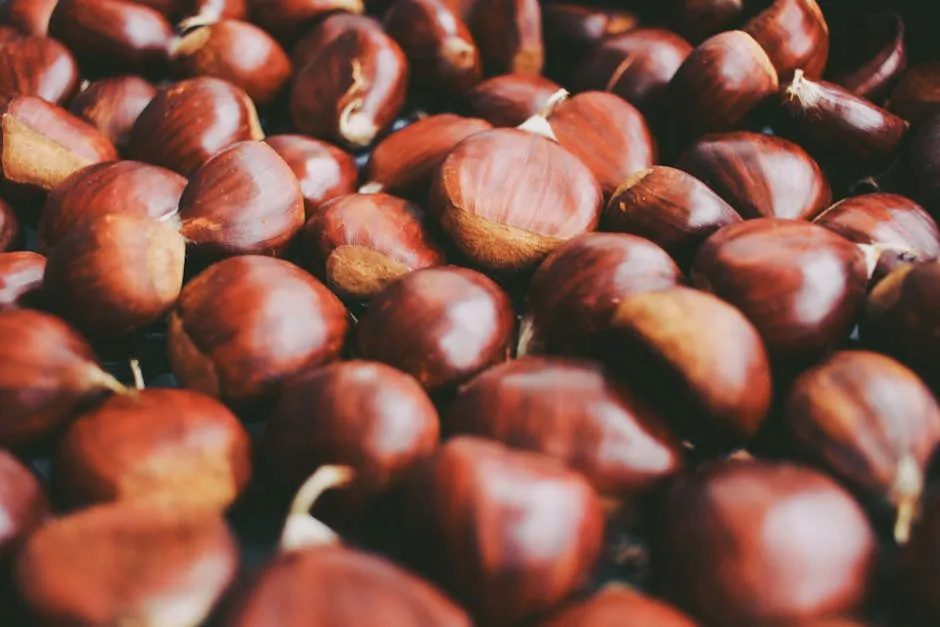Introduction
The raw food diet focuses on consuming unprocessed foods. This lifestyle is gaining popularity for its potential health benefits. Many believe it can lead to weight loss and enhanced energy levels. However, it also presents challenges, like nutrient deficiencies and food safety issues.
If you’re looking to dive into this vibrant lifestyle, a Raw Food Diet Cookbook is a must-have. It provides delicious recipes to keep your meals exciting and nutritious while sticking to the raw food principles!
Summary and Overview
A raw diet consists primarily of unprocessed, whole foods. Its main principle is to eat items that haven’t been cooked or refined. Common types include raw vegan, raw vegetarian, and raw omnivorous diets. Each has unique features, focusing on different food sources.
The raw vegan diet excludes animal products entirely. The raw vegetarian diet allows for raw dairy and eggs. In contrast, the raw omnivorous diet includes raw fish and meats.
Adopting a raw diet can lead to health benefits, such as weight loss and increased energy. However, it’s essential to be cautious of potential risks, including nutritional deficiencies and foodborne illnesses. The balance between benefits and drawbacks is crucial for anyone considering this lifestyle.

To make your raw food preparation easier, consider investing in a Dehydrator for Raw Food Preparation. It allows you to create delicious snacks like veggie chips and dried fruits without losing nutrients!
What is a Raw Diet?
A raw food diet emphasizes eating foods that are not cooked. The main idea is that raw foods retain more nutrients than cooked options. Typically, foods should not be heated above 104°F (40°C). This temperature threshold helps preserve enzymes and nutrients.
The diet primarily consists of fresh fruits, vegetables, nuts, and seeds. Other options include sprouted grains and legumes. Some variations of the raw diet may include raw animal products like eggs and fish.
Food preparation methods for a raw diet include juicing, blending, soaking, and dehydrating. These techniques help create tasty and nutritious meals while adhering to the raw food principles. Overall, the raw diet promotes a lifestyle rich in unprocessed foods, with a focus on health and nutrition.

To really get those nutrients in your smoothies, you’ll need a High-Speed Blender. This powerhouse appliance can whip up your favorite smoothies and soups in a flash, ensuring you’re getting the most out of your ingredients!
Benefits of a Raw Diet
Adopting a raw diet can offer numerous nutritional advantages. Raw foods, especially fruits and vegetables, are packed with vitamins, minerals, and antioxidants. These nutrients support overall health, making them essential for your body.
One significant benefit of a raw diet is improved heart health. Studies suggest that raw food eaters often have lower blood pressure and cholesterol levels. This may reduce the risk of heart disease and stroke.
Another advantage is better digestion. Raw foods are rich in fiber, which aids in maintaining a healthy gut. This can lead to fewer digestive issues and enhanced nutrient absorption.
Weight loss is another potential benefit. Many raw foods are low in calories yet high in fiber. This combination helps you feel full longer, which can lead to reduced calorie intake. Research indicates that those following a raw diet often experience a lower body mass index (BMI) and improved health markers.

To keep your raw snacks healthy, consider using an Nut Milk Bag. This handy tool makes it easy to create delicious nut milk and other healthy snacks, maximizing your raw food experience!
In summary, a raw diet can be nutrient-rich, support heart health, aid digestion, and promote weight loss, making it an appealing choice for many seeking a healthier lifestyle.
Foods to Include in a Raw Diet
When starting a raw diet, it’s important to know which foods are allowed. Fresh fruits and vegetables are the main staples. They provide essential vitamins and minerals necessary for good health.
Raw nuts and seeds are also encouraged. They offer healthy fats and protein that keep you energized. Sprouted grains and legumes can be included as well. These foods add variety and are great sources of fiber.
Fermented foods like kimchi and sauerkraut are beneficial too. They contain probiotics that promote gut health. Including these foods in your diet can enhance flavor and provide additional nutrients.

To kickstart your raw journey, consider incorporating more of these foods into your meals. A simple way to start is by adding a daily smoothie or salad loaded with these ingredients. Enjoy the delicious flavors and nutritious benefits of a raw diet!
For those moments when you want to add some crunch, a Organic Raw Nuts Variety Pack is perfect! They provide essential nutrients and healthy fats, making them a great addition to any raw meal.
Foods to Avoid on a Raw Diet
When adopting a raw diet, it’s crucial to know which foods to exclude. First and foremost, cooked foods are a no-go. This includes any items that have been heated above 104°F (40°C). Cooked fruits and vegetables lose valuable nutrients and enzymes, which are key benefits of raw foods.
Processed items are also prohibited. This category includes refined sugars, oils, and any packaged snacks. These foods often contain additives and preservatives that undermine the raw diet’s health benefits.
Depending on your raw diet type, animal products may be excluded or limited. For instance, raw vegans avoid all animal products. However, raw omnivores might include raw fish or meat. It’s essential to understand your diet’s focus to make informed choices. Avoiding these foods helps ensure you’re getting the most out of your raw eating experience.

Nutritional Considerations
While a raw diet can be vibrant and full of fresh ingredients, it may pose nutritional challenges. One major concern is potential deficiencies in key vitamins and minerals. For example, vitamin B12, often found in animal products, is difficult to obtain on a strict raw vegan diet. Studies show that about 50% of raw vegans may be deficient in this crucial vitamin.
Iron is another nutrient that can be lacking. Plant-based iron is less bioavailable than its animal-based counterpart, making it harder to absorb. Calcium is also a common concern, especially for those avoiding dairy. Research indicates that many individuals on raw diets struggle to meet their calcium needs.
To combat these deficiencies, a balanced approach is vital. Incorporating a variety of raw foods can help cover nutritional bases. Additionally, consider supplementation for nutrients like B12 and vitamin D. Regularly consuming fortified foods or taking quality supplements can ensure you’re meeting your dietary requirements.

Consider using a Food Scale for Portion Control. This nifty tool helps you monitor your servings and ensure you’re getting enough nutrients without going overboard!
Preparing Raw Food Meals
Creating meals on a raw diet can be fun and nourishing. Here are some essential tips to get started.
First, focus on preparation techniques. Juicing is a popular method to extract nutrients from fruits and vegetables. It’s an excellent way to start your day with a refreshing drink. Dehydrating is another fantastic option. This method preserves food while intensifying flavors. You can create crunchy snacks like vegetable chips or fruit leathers.
Soaking is also crucial. Soaking nuts and seeds overnight can improve digestibility and enhance nutrient absorption. Sprouting grains and legumes adds a fresh crunch and boosts nutrients.
Next, meal planning is key. Aim to include a variety of ingredients in your diet. Create a weekly menu with different recipes to keep meals exciting. Don’t forget to search for raw food recipes online! You can find everything from smoothies to salads and raw desserts.

For an easy way to keep your food fresh, consider using Glass Food Storage Containers. They help you keep your raw ingredients organized and fresh, making meal prep a breeze!
Food safety is vital too. Always wash fruits and vegetables thoroughly to remove any dirt or pesticides. Store raw ingredients properly to prevent spoilage. Be cautious with raw animal products; they carry a higher risk of foodborne illness.
For those looking for structured guidance, consider downloading meal plans or raw food recipes tailored to your needs. These resources can simplify your meal prep and inspire creativity in your kitchen. Enjoy the process of preparing delicious raw meals!

Common Myths About Raw Diets
There are many misconceptions about raw diets. Let’s clarify a few.
One common myth is that raw foods provide better nutrient absorption. While raw foods are nutritious, cooking can also enhance nutrient availability in some cases. For instance, cooking tomatoes increases the availability of lycopene, a beneficial antioxidant.
Another myth concerns safety. Some people worry that raw diets are unsuitable for pregnant women or children. However, with proper planning and food safety, many can safely follow a raw diet. It’s essential to focus on hygiene and choose high-quality, fresh ingredients.
People often think raw diets are deficient in essential nutrients. While it’s true that certain vitamins, like B12, can be hard to obtain, careful planning and supplementation can address these gaps.
Overall, understanding the facts can help you make informed decisions about a raw diet. If you have questions or concerns, consulting a healthcare professional can provide personalized guidance.

Conclusion
In conclusion, the raw food diet emphasizes unprocessed, whole foods for better health. We’ve discussed the primary principles, benefits, and potential risks of this lifestyle. While raw foods can boost nutrient intake and support weight loss, balance is crucial. A mix of raw and cooked foods may provide a more rounded nutritional profile. Before making significant dietary changes, consulting a healthcare provider is essential. They can guide you to ensure you’re meeting your health needs while exploring the raw food lifestyle. Consider starting small and see how you feel!
For those who want to explore more recipes, an Organic Plant-Based Cookbook can be a fantastic addition to your collection!
FAQs
What is a raw food diet?
A raw food diet consists of unprocessed, whole foods. It typically includes fruits, vegetables, nuts, and seeds. Some variations may incorporate raw dairy, eggs, or meat. The main principle is to consume foods that haven’t been heated above 104°F (40°C), preserving nutrients and enzymes. Following this diet can lead to various health benefits, including weight loss and improved energy.
Is a raw diet safe for everyone?
A raw diet may not be suitable for everyone. Pregnant women, young children, the elderly, and those with weakened immune systems may face health risks. Additionally, individuals with certain medical conditions should consult a healthcare provider before adopting this diet. Foodborne illnesses are a concern as well, particularly with raw animal products.
What foods can I eat on a raw food diet?
Allowed foods include fresh fruits, vegetables, raw nuts, seeds, sprouted grains, and legumes. Fermented foods like kimchi and sauerkraut are also encouraged. Depending on your dietary choice, you may consume raw dairy, eggs, or even raw fish and meats. It’s important to focus on high-quality, organic options for the best nutrition.
Can I lose weight on a raw food diet?
Many people experience weight loss on a raw food diet. Raw foods are often low in calories yet high in fiber, which helps you feel full longer. However, it’s essential to ensure you’re getting enough nutrients, as deficiencies can arise from overly restrictive eating. Sustainable weight loss involves balancing your calorie intake and ensuring nutritional adequacy.
How do I ensure I get enough nutrients on a raw food diet?
To maintain nutritional balance, include a diverse range of raw foods in your diet. Pay special attention to vitamins and minerals that might be lacking, such as B12, iron, and calcium. Consider supplementation if needed, and monitor your health regularly. Consulting a healthcare provider or dietitian can help you create a balanced meal plan that meets your needs.
Please let us know what you think about our content by leaving a comment down below!
Thank you for reading till here 🙂
To ensure the health benefits of a raw diet, it’s crucial to understand raw food safety practices.
All images from Pexels





